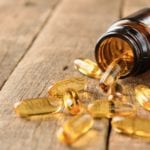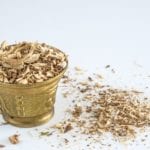Alternative Treatments consist of any approach considered non-conventional which may include herbs, vitamins, minerals, amino acids, peptides, and other natural non-toxic supplements. When used in conjunction with conventional approaches these alternative modalities are often called “complimentary.” Although patient surveys suggest that over 70% of advanced cancer patients use some form of alternative or complimentary therapy, their use in mesothelioma is not well documented. Below are examples of some of the alternative therapies utilized by Paul Kraus.
Note: You should not use these treatments unless they are supervised by a licensed healthcare practitioner. In addition, access to these agents may be regulated by various U.S. laws.
Alternative Approaches
Alternative cancer approaches may be defined in many different ways. One definition is that alternative therapies consist of any modality that is not used by conventional medicine. Such modalities may include – immune therapies, mind-body medicine, herbal therapies, vitamin therapies, nutrition or dietary therapy, and Traditional Chinese Medicine.
When alternative therapies are used to complement conventional therapies or are used in combination with conventional therapies they may be called, respectively, “complementary therapies” or “integrative therapies.”
Mesothelioma Treatment Alternatives with Paul Kraus
Alternative Treatment Options
Ukrain
Ukrain is a semi-synthetic compound derived from a common weed, greater celandine (Chelidonium majus L .) combined with the chemotherapy drug Triethylene-thiophosphoric acid triamide (Thiotepa). Celandine contains a range of alkaloids, most notably chelidonine. Ukrain consists of one molecule of Thiotepa conjugated to three molecules of celandine and is commonly administered intravenously.
Ukrain has been tested in cell cultures ( in-vitro ), in animals, and in patients. A systematic review of all the randomized clinical trials (RCT’s) involving Ukrain was published in July 2005. 1 The study identified seven RCT’s. 2 The majority of these studies were published in two different journals between 1995 and 2002 by four different groups of authors from Belarus and Germany . These seven studies focused on patients with colorectal, bladder, pancreatic, and breast cancer. Although all of the studies demonstrated efficacy and/or improvement in patient’s quality of life, the authors noted that the RCT’s they reviewed had “serious methodological limitations” and that “independent rigorous studies are urgently needed.” Ukrain is reportedly used by alternative practitioners throughout the world and is manufactured by a company in the Ukraine. 3
Iscador
In 1998 the Canadian Medical Association published an article that reviewed the use of Iscador. The following information is quoted directly from that article: 4
“Iscador is the trade name of the most commonly available brand of an extract of Viscum album , a European species of mistletoe, which differs from the North American species. Mistletoe is a semiparasitic plant that lives symbiotically with several tree species, including oak, pine, elm and apple. Considered sacred in ancient times, it has been used for centuries in Europe to treat a variety of acute and chronic health conditions.Although there have been few claims that Iscador reduces tumor size, proponents believe that it stimulates the immune system, promotes the reversion of cancerous cells to more differentiated forms, improves general well-being and may improve survival, especially in patients with cancer of the cervix, ovary, breast, stomach, colon and lung.Iscador is prepared by fermenting an aqueous extract of the whole mistletoe plant with the bacterium Lactobacillus plantarum . The product is then mixed and filtered to remove the bacteria before being standardized and packaged in ampules for injection.[A] number of clinical studies and review articles have now appeared in the English-language literature. Several studies indicated an improvement in immune function, quality of life and even survival. However, most of the studies had significant design limitations, making it difficult to interpret their results and seriously limiting the value of their findings.” 5
A Medline search for the results of recent clinical trials involving Iscador yielded two studies – one from 2005 and one from 2004. The study published in 2005 involved high-risk malignant melanoma (stages II and III). The patients who received Iscador were reported to have “significantly lower” rates of lung and brain metastases and “significantly superior” overall survival. 6 And in a 2004 breast cancer study, the authors concluded, “Complementary therapy of patients with primary, non-metastatic breast carcinoma with the mistletoe extract Iscador was safe and in comparison to the control group within the same study cohort showed considerably fewer adverse drug reactions attributed to concurrent conventional therapy, reduced disease symptoms, and suggested a significant improvement of survival.” 7
Iscador is produced by a company based in Germany and Switzerland. 8
Vitamin C
Incredibly, vitamin C is one of the most “controversial” alternative treatments for cancer. A major proponent for its efficacy in cancer was Dr. Linus Pauling who achieved the remarkable distinction of being awarded two unshared Nobel Prizes. He and Ewan Cameron , MB , ChB, chief surgeon at Vale of Leven Hospital in Scotland administered vitamin C to cancer patients and reportedly had excellent results. 9 However, other institutions that have performed similar studies reported no efficacy. 10 Nonetheless, ascorbic acid has been reported as “the single-nutrient supplement most commonly used by cancer patients…” 11
In 1994, in his final interview before his death at the age of 93, Dr. Pauling discussed his interest in vitamin C. He stated, “One piece of evidence that made quite an impression on me 20 years ago was when Irwin Stone, PhD, pointed out that most animals, except humans, monkeys and apes, manufacture vitamin C.Vitamin C–ascorbic acid or sodium ascorbate or calcium ascorbate–is involved in a great number of biochemical reactions in the human body. Two of its major interactions are in potentiating the immune system and aiding the synthesis of the protein collagen, which is a very important substance that holds together the human body. Collagen strengthens the blood vessels, the skin, the muscles and the bones. You can’t make collagen without using up vitamin C. 12 ” In his book, Cancer and Vitamin C , Dr. Pauling explains how the integrity of collagen helps protect against cancer metastases.
In 1991, the National Cancer Institute published a study in which they stated that “Epidemiologic evidence of a protective effect of vitamin C for non-hormone-dependent cancers is strong.”
Ozone Therapy
There has been published scientific data (some going back over 60 years) that cancer cells do not prosper in a richly oxygenated (i.e. aerobic) environment. (See for example the writings of Dr. Otto Warburg.) Ozone is an activated, trivalent (three atoms) form of oxygen. Oxygen is O 2 whereas ozone is O 3 . Medical ozone is made when medical grade oxygen is electrically activated (using an ozone generator) to form ozone. Ozone is germicidal, bactericidal, and fungicidal.
There is little published literature on the safety and efficacy of ozone therapy in the treatment of cancer. One study published in 1980 found that “the growth of human cancer cells from lung, breast, and uterine tumors was selectively inhibited in a dose-dependent manner by ozone at 0.3 to 0.8 part per million of ozone in ambient air during 8 days of culture.” 13 And a 1991 study found that ozone in combination with a carcinogen “favors development of tumors” while ozone exposure after carcinogen exposure “inhibits tumor development.” 14
Astragalus
Astragalus membranaceus is a plant native to northern China and the elevated regions of the Chinese provinces Yunnan and Sichuan . The portion of the plant used medicinally is the four- to seven-year-old dried root collected in the spring. The Chinese have used Astragalus for many thousands of years to replenish a person’s vital energy.
Nearly all the scientific studies on Astragalus have been conducted in China . A 2002 study concluded that “Astragalus injection supplemented with chemotherapy could inhibit the development of tumor, decrease the toxic-adverse effect of chemotherapy, elevate the immune function of organism and improve the quality of life in patients.” 15 And a 2003 Chinese study reported that “Astragalus injection combined with chemotherapy can significantly improve the quality of life in non-small-cell lung cancer patients of advanced stage.” 16
Cat’s Claw
Cat’s Claw ( Uncaria tomentosa ) is a tropical vine that grows in South America . This vine gets its name from the small thorns at the base of the leaves, which look like a cat’s claw. It has been used in South-American folk medicine for the treatment of cancer, arthritis, gastritis and epidemic diseases.
Various conventional studies have been performed yielding inconsistent results. One cancer study that found positive results was published in 2001. This study was performed on a human breast cancer cell line. The authors concluded that Cats Claw was anti-mutagenic and anti-proliferative. 17
References
1 Ernst and Schmidt, Ukrain – a new cancer cure? A systematic review of randomised clinical trials. BMC Cancer. 2005 Jul 1;5(1):69.
2
- Susak, et al., Comparison of chemotherapy and X-ray therapy with Ukrain monotherapy for colorectal cancer . Drugs Exp Clin Res 1996, 22:115-22.
- Bondar, et al., Comparative evaluation of the complex treatment of rectal cancer patients (chemotherapy and X-ray therapy, Ukrain monotherapy ). Drugs Exp Clin Res 1998, 24:221-6.
- Zemskov, et al., Ukrain (NSC-631570) in the treatment of pancreas cancer. Drugs Exp Clin Res 2000, 26:179-90.
- Uglyanitsa, et al., Comparative evaluation of the efficiency of various Ukrain doses in the combined treatment of breast cancer. Report I. Clinical aspects of Ukrain application. Drugs Exp Clin Res 2000, 26:223-30.
- Zemskov, et al., Efficacy of Ukrain in the treatment of pancreatic cancer. Langenbecks Arch Surg 2002, 387:84-9.
- Gansauge, et al., NSC-631570 (Ukrain) in the palliative treatment of pancreatic cancer. Results of a phase II trial. Langenbecks Arch Surg 2002, 386:570-4.
- Susak, et al., Randomised clinical study of Ukrain on colorectal cancer. Eur J Cancer 1995, 31:S153.
3 Ukrainian Anti-Cancer Institute, Velyka Zhytomyrska 17/28, Kiev , Ukraine
Tel: (+380) 44 27237191
Fax: (+380) 44 27237191
E-mail: <nowicky@ukrin.com>
http://www.ukrin.com/local.htm
4 Kaegi E. Unconventional therapies for cancer: 3. Iscador . Task Force on Alternative Therapies of the Canadian Breast Cancer Research Initiative. CMAJ. 1998 May 5;158(9):1157-9.
5 Id.
6 Augustin, et al., Safety and efficacy of the long-term adjuvant treatment of primary intermediate- to high-risk malignant melanoma (UICC/AJCC stage II and III) with a standardized fermented European mistletoe (Viscum album L.) extract. Results from a multicenter, comparative, epidemiological cohort study in Germany and Switzerland . Arzneimittelforschung. 2005;55(1):38-49.
7 Bock, et al. Retrolective, comparative, epidemiological cohort study with parallel groups design for evaluation of efficacy and safety of drugs with “well-established use”. Forsch Komplementarmed Klass Naturheilkd. 2004 Aug;11 Suppl 1:23-9.
8 See the Weleda AG website available at: http://usa.weleda.com/iscador/
9 Cancer and Vitamin C: A Discussion of the Nature, Causes, Prevention, and Treatment of Cancer With Special Reference to the Value of Vitamin C by Ewan Cameron, Linus Pauling, April, 1993.
10 See for example, Creagan et al., Failure of high-dose vitamin C (ascorbic acid) therapy to benefit patients with advanced cancer. A controlled trial. N Engl J Med. 1979 Sep 27;301(13):687-90.
11 Block and Mead, Vitamin C in alternative cancer treatment: historical background . Integr Cancer Ther. 2003 Jun;2(2):147-54.
12 Linus Pauling, PhD: The Last Interview by Peter Barry Chowka available at: http://members.aol.com/realmedia/pauling.html
13 Sweet, et al., Ozone selectively inhibits growth of human cancer cells . Science. 1980 Aug 22;209(4459):931-3.
14 Witschi, Effects of oxygen and ozone on mouse lung tumorigenesis. Exp Lung Res. 1991 Mar-Apr;17(2):473-83.
15 Duan and Wang, Clinical study on effect of Astragalus in efficacy enhancing and toxicity reducing of chemotherapy in patients of malignant tumor . Zhongguo Zhong Xi Yi Jie He Za Zhi. 2002 Jul;22(7):515-7.
16 Zou and Liu., Effect of astragalus injection combined with chemotherapy on quality of life in patients with advanced non-small cell lung cancer. Zhongguo Zhong Xi Yi Jie He Za Zhi. 2003 Oct;23(10):733-5.
17 Riva, et al., The antiproliferative effects of Uncaria tomentosa extracts and fractions on the growth of breast cancer cell line . Anticancer Res. 2001 Jul-Aug;21(4A):2457-61.








